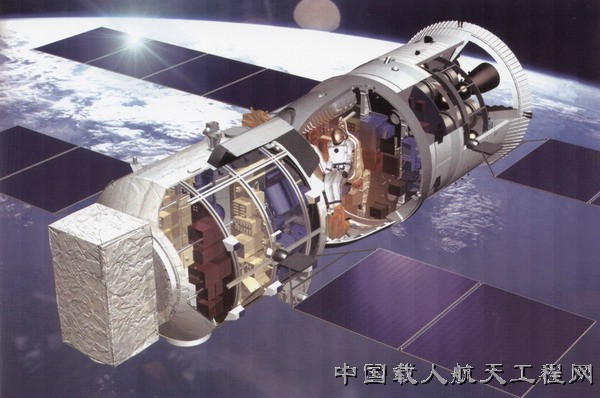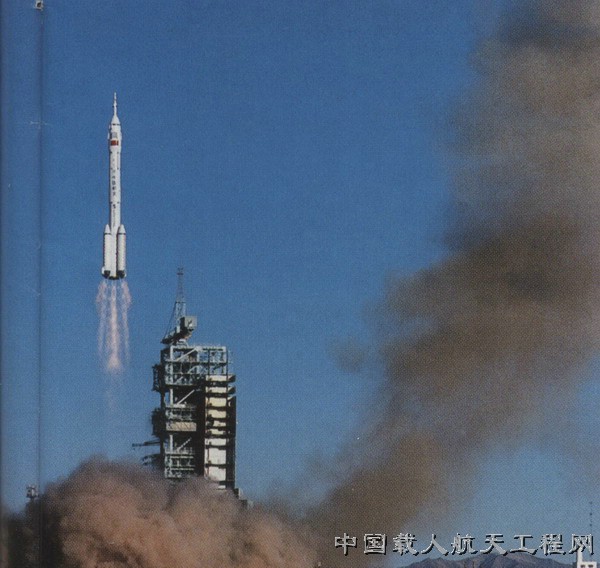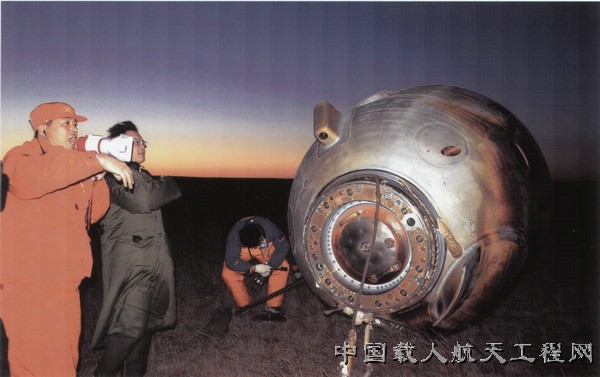
This week in rocket history is Shenzhou 5, China’s first crewed spaceflight.
In the late 1980s, China, after having successfully launched many satellites, debated the best way to make and launch a crewed spacecraft. Scientists and engineers considered everything from crewed capsules to more complex reusable shuttles for their first crewed craft. A shuttle would bring prestige to China by impressing the world. On the other hand, a capsule would be easier to build and more robust.
After years of back and forth, the simpler capsule design was chosen. In 1992, Project 921 was approved to build a small three-module capsule. After a series of uncrewed test launches, the goal was to have the first crewed launch in 2002. The Russian space program’s path to crewed flight was similar. The two countries actually collaborated heavily, including several exchanges of personnel and component purchases over the course of development. Unsurprisingly, the Shenzhou ended up looking pretty similar to the Soyuz — but with several improvements befitting the thirty-odd years of technology between the first Soyuz spacecraft and Shenzhou.
There is one major difference between the two spacecraft: the docking port. The Soyuz docking port, the SSVP, hasn’t changed much since the 1960s. The Shenzhou, on the other hand, uses a port derived from the Autonomous Peripheral Attachment System, also known as APAS-95. APAS-95 was itself slightly modified from the port developed for the Soviet Buran space shuttle orbiter.

Seven years after the approval of Project 921, the first uncrewed Shenzhou test flight occurred in 1999. This first flight was mainly to test the new Long March 2F rocket, the first human-rated Chinese rocket. The first real spacecraft was behind schedule, so in its place, one of the Shenzhou ground test articles was outfitted for spaceflight. The capsule successfully landed after a few orbits.
The second uncrewed test flight happened a couple of years later in 2001. Shenzhou 2 carried a monkey, a dog, and a rabbit to orbit to test the capsule’s life support system. All animals survived the flight.
Both Shenzhou 3 and 4 were launched in 2002. Shenzhou 3 was the first to have a working launch escape system. Shenzhou 4 was the final uncrewed test flight of the Shenzhou. Yang Liwei, the first Chinese astronaut, even boarded this capsule prior to launch but departed before liftoff.
Finally, after years of planning and testing, it was time for Shenzhou 5 to become the first crewed mission of the Chinese space program. In August 2003, the Long March 2F rocket for the flight arrived at the Jiuquan Satellite Launch Site.
The months and weeks leading up to the mission were full of confusion. All Chinese astronauts, fifteen at that time, were sent to the launch site in the months before launch. It was initially reported in August 2003 that the flight would carry three crew members and the mission would last a week. The official announcement, however, was finally made one week before liftoff. Shenzhou 5 would only take one astronaut up for a single day. Yang Liwei was selected from a final group of three to be the first Chinese astronaut to go to space. Two hours and forty-five minutes before launch, he boarded the spacecraft.

Shenzhou 5 launched from the Jiuquan Satellite Launch Center on October 15, 2003, at 01:00 UTC. Five hundred and eighty-seven seconds later, China made history as the third country to put a person in space, after Russia and the United States. The ascent was fine, though Yang did report violent shaking from the rocket during the second stage burn. The Long March 2F was modified to prevent this from occurring on future flights. Shenzhou 5 achieved a 199-by-347-kilometer orbit.
Yang remained in the descent module for the entire 21-hour mission. The spacecraft was entirely controlled from the ground, but Yang could manually command the solar panels to open if the automatic system failed. Other than taking part in lots of television broadcasts, Yang did not do much other than eat meals and nap in the capsule. To emphasize the peaceful nature of the mission, Yang waved both a Chinese and United Nations flag during one of the broadcasts.
After almost 22 hours in space, Yang landed safely in Inner Mongolia. After a brief medical examination, he was sent to Beijing. The orbital module of Shenzhou 5 remained in orbit and spent six months performing a military reconnaissance mission with a series of cameras.
More Information
Shenzhou 5 (Astronautix)
Shenzhou V (CMS)
“Shen VII” carrier rocket has completed the final assembly and factory test will be launched today (Chinese) (China News)




 Join the Crew!
Join the Crew!
 Escape Velocity Space News
Escape Velocity Space News
0 Comments